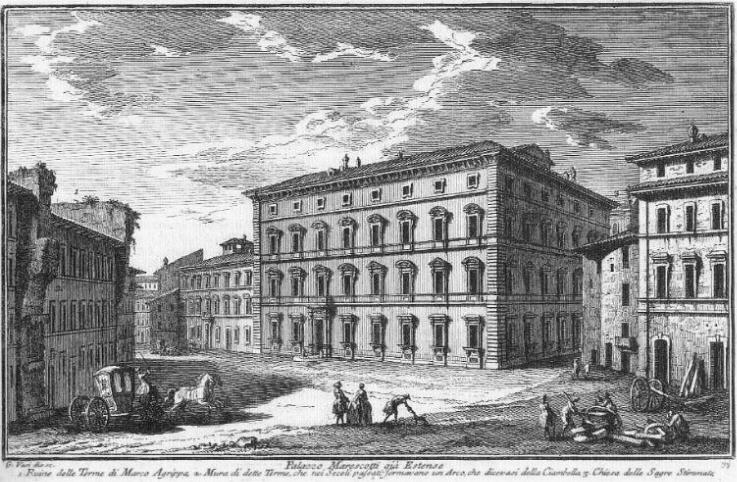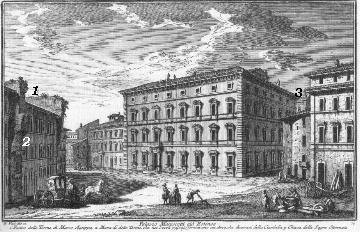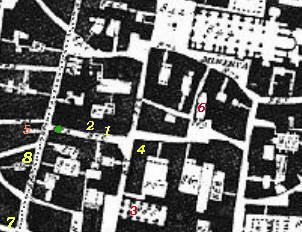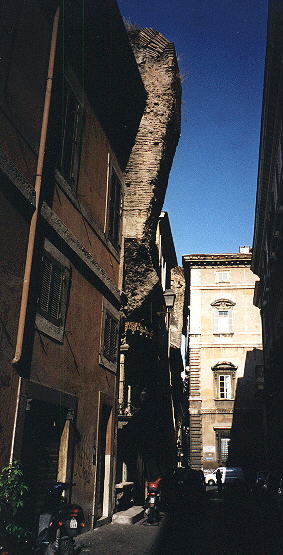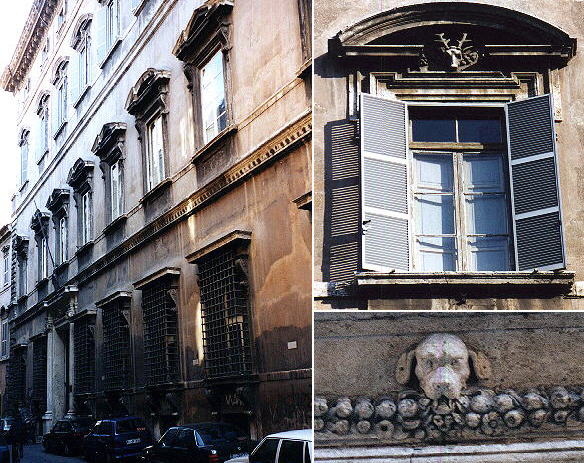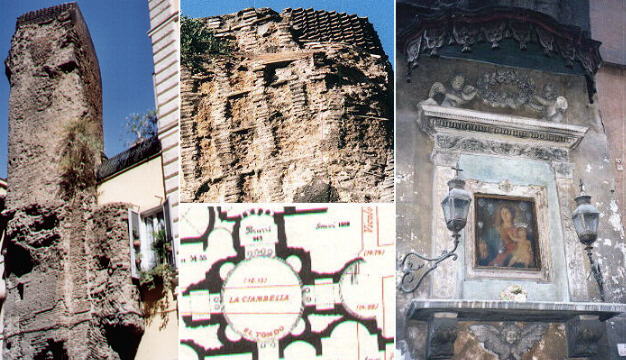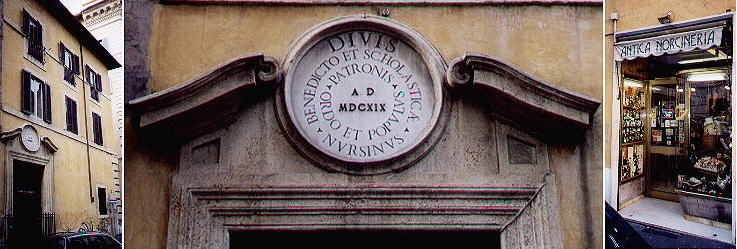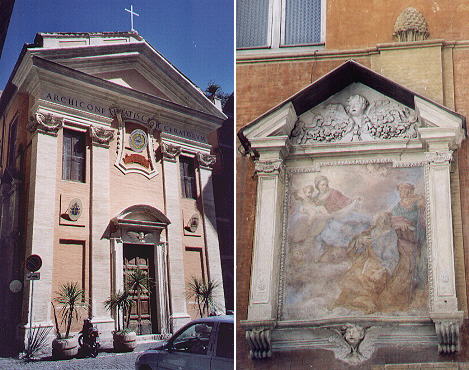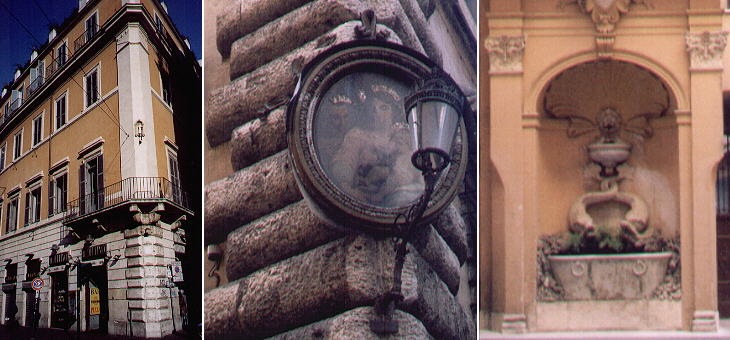  Palazzo Marescotti già Estense (Book 4) (Day 4) (View C7) (Rione Pigna) and (Rione Sant'Eustachio) In this page:
Palazzo Marescotti was built by Giacomo Della Porta at the end of
the XVIth century near the church of S. Maria sopra
Minerva. The view is taken from the green dot in the small 1748 map here below.
In the description below the plate Vasi made reference to: 1) Ruins of Agrippa's Baths;
2) Arco della Ciambella; 3) Chiesa delle Stimmate
di S. Francesco. 3) is shown in another page.
The small map shows also 4) Palazzo Marescotti; 5) SS. Benedetto e Scolastica; 6) S. Giovanni della Pigna; 7) Palazzo Datti; 8) Palazzo Sinibaldi. The dotted line in the small map delineates
the border between Rione Sant'Eustachio (left) and Rione Pigna (right).
To say that Vasi took some liberties in his plate is an understatement. Palazzo Marescotti is imprisoned in a web of narrow streets and this is what you see of it from the viewpoint chosen by Vasi, which is clearly identifiable by the ruins called l'Arco della Ciambella (believe it or not it means Arch of the Doughnut), because they supported the round vault of the bath's main room.
The palace of a severe aspect has some more frivolous details in the windows and above the front door.
The ruins belong to the first Baths of Rome built in 25 B.C. by Agrippa.
They were excavated by Cardinal Della Valle who was searching for treasures
of the past.
St. Benedict was born in Norcia, a little town near Spoleto and the tiny community of immigrants from Norcia dedicated to him and to his sister Scolastica a little church near Arco della Ciambella. The church was part of a building which served the community. As many other foreign communities, the Norcini specialized in a trade: they were butchers with a reputation for hams and salamis and still today a few shops are named after them. Click here for a list of National churches in Rome.
The name of the church makes reference to Pigna the large bronze fir-cone (now in Cortile del Belvedere) which once stood on this site. The old church which dated back to the Xth century was replaced in the second half of the XVIIth century by a new building designed by Angelo Torrone. The church belonged for centuries to Arciconfraternita dei Carcerati a brotherhood providing assistance to prisoners. The decoration of the church has several references to the fir-cone. The side is decorated with a fine XVIIIth century fresco.
Most of the buildings in the street marking the border between Rione Sant'Eustachio and Rione Pigna have late Renaissance features, but the narrowness of the street makes it
difficult to notice them. Palazzo Datti gained from the opening of Corso Vittorio Emanuele in the late XIXth century, but this event led to the opening of shops,
so that only its corner shows an interesting design. Palazzo Sinibaldi, another Renaissance palace has
one of the oldest sacred images of Rome. The courtyard of another palace is embellished by a finely designed fountain.
Next plate in Book 4: Palazzo Mattei Next step in Day 7 itinerary: Chiesa delle Stimmate di S. Francesco Next step in tour of Rione Pigna: Palazzo Altieri Next step in your tour of Rione Sant'Eustachio: Archiginnasio della Sapienza
Go
to |
All images © 1999 - 2003 by Roberto Piperno. Write to romapip@quipo.it
